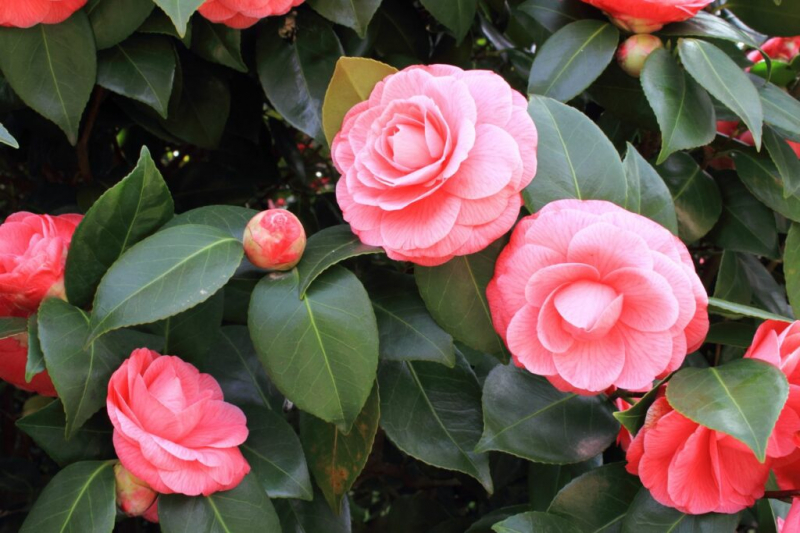Petunias: Planting, Care And The Best Varieties
There are both hanging and standing varieties of petunia. We show where and how best to plant petunias and what to consider when caring for the flowers.
Whether hanging petunias in hanging baskets or standing in the balcony box – petunias ( Petunia ) with their large, chalice-shaped flowers that shine in a wide variety of colors, should not be missing on any balcony. There are 16 species in total, most of which come from South America.
This is where its name comes from: the botanical name Petunia is derived from Petun, the Brazilian native word for tobacco. In fact, petunias are very closely related to tobacco and, like this, belong to the nightshade family ( Solanaceae ). The garden petunia ( Petunia × hybrida ) is a hybrid produced from several species of the genus.
The flowers range in their hues from white to red, purple, and yellow. There is something for every taste. To get the most out of your petunias, there are just a few simple steps to take when caring for these frugal flowering miracles. Here you can find out exactly what needs to be considered when growing and caring for petunias.
Planting petunias: the right location
Table of Contents
As a true South American, the petunia prefers a location in the blazing sun. But the plants also thrive in partial shade. However, not quite as many flowers are formed there as in the blazing sun. A place protected from wind and rain is also ideal. For example, your plants will thrive on a beautiful sunny balcony as if they had never left their home.
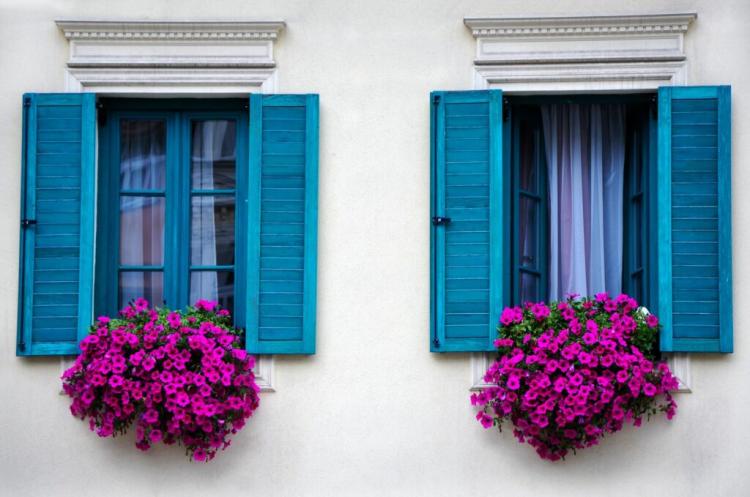
The right soil for petunias
Well-drained soil should be used to avoid waterlogging. Petunias prefer soil that is rich in nutrients. A rich compost or potting soil can be used when planting. Unfortunately, petunias often suffer from iron deficiency. This can be recognized by discolored leaves with green leaf veins. This characteristic discoloration first sets in on the younger leaves.
Specialized petunia soil is available in specialist shops, which counteracts iron deficiency. This soil has a low pH value, which counteracts the increase in pH value caused by too-hard irrigation water. Hard water has many minerals that cause the pH in the soil to rise. However, iron in the soil is best available to the plants at a pH of 4.5. It is also recommended to use a slow-release fertilizer when planting.
Planting petunias in a pot
Petunias can classically be planted in window boxes. Here or in hanging baskets, hanging petunia varieties with their long, flower-rich shoots are particularly effective. Standing petunias are particularly suitable for planting out in the garden. But some hanging varieties can also be planted in the bed as ground cover. When planting in a planter, it should be around 3 cm more in circumference than the root ball. A drainage layer on the bottom should ensure that the water drains off well.
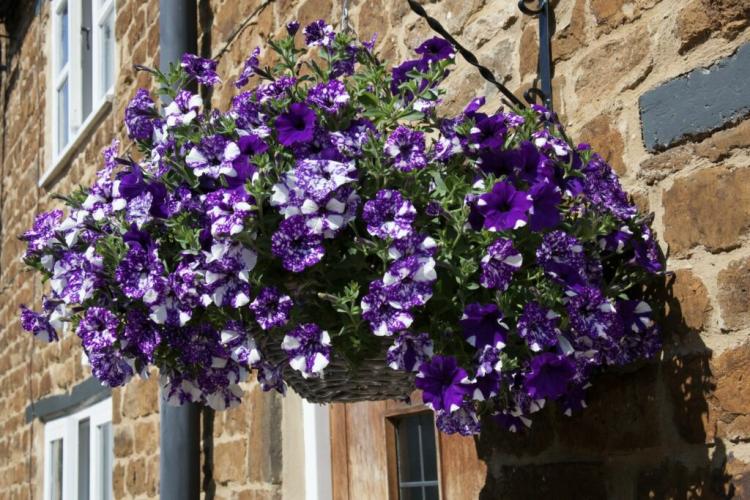
Because of their long shoots, hanging petunias need a little more space than the upright growing varieties. The best thing to do is to plant the plants in the soil up to the upper edge of the roots. This should be well watered after planting so that the plants feel comfortable and have enough water available.
When filling the earth, cavities are removed by gently pressing down on them. It is important to do the whole thing very carefully, otherwise, the earth can easily become too compact and this can make root growth and water drainage more difficult. If several petunias are planted next to each other, a minimum distance of approx. 30 cm should be maintained between the plants.
The right planting time for petunias
Petunias are not sensitive to light frost, but as sun-drenched South Americans, they can easily get cold feet in our regions in spring. You should therefore not put the plants outside until mid-May – then your plants are safe from frost.

Summary growing petunias:
- Location: Sun to partial shade
- Protected from rain and wind
- Well-drained, rich soil
- Petunia soil to avoid iron deficiency
- Planter: balcony box, hanging basket, tub, or planting in the bed
- Planter with good water drainage; Drainage at the bottom
- Distance between petunia plants at least 30 cm
- Plant out from mid-May (no more risk of frost)
Maintain petunias
Petunias are very frugal plants and show that true beauty doesn’t need much care. With the right knowledge, you ensure that these natural beauties can show their best side.
Watering petunias
Petunias want regular watering because they need a lot of water. However, waterlogging should be avoided as much as possible. So that the leaves and flowers of the plants do not stick together, you should water from below. Soft tap or rainwater is best for this.

Fertilize petunias
In general, it is advisable to work a primarily organic long-term fertilizer into the soil directly when planting. In addition, some compost can be added to the potting soil so that sufficient phosphorus is available for a rich flowering. Alternatively, fertilize monthly with organic liquid fertilizer until the plants have blossomed well. Thereafter, the fertilization rhythm is increased every one to two weeks. A phosphate-based fertilizer can be used to strengthen the plants and the formation of flowers. If you pour hard water, it is best to use an iron fertilizer as well.
Cut petunias
As such, petunias do not need to be cut. However, withered inflorescences should be cleaned regularly. This extends the flowering phase of the plants. If you want to overwinter your petunias, the shoots are radically cut back to about 15 cm before and after overwintering.
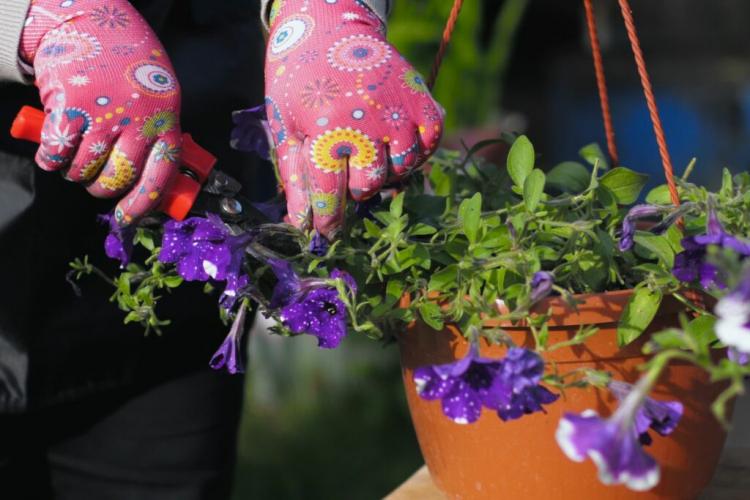
Summary: How to Properly Care for Petunias:
- Water a lot, but avoid waterlogging
- Pour from below
- Use soft tap or rainwater
- Use of organic slow-release fertilizer (when planting and after 2 months later). Alternatively: fertilize monthly with commercially available liquid fertilizer until flowering has progressed well, then every 1 to 2 weeks
- Strengthening the plants with fertilizer containing phosphate
- Additional fertilization with iron fertilizer
- Clean up faded inflorescences in summer
- Radical pruning before and after wintering
Propagate petunias
You can buy petunias anew every year or save a few euros by taking the multiplication of these colorful balcony dwellers into your own hands.
Propagate petunias by cuttings
The cuttings are best cut in summer. For this purpose, 10 cm long side shoots are cut off. The leaves are removed (apart from the top pair of leaves). Either place the cuttings in lime-free water until the roots form or put them directly in a potty with soaked potting soil.
As soon as the cuttings sprout again, enough roots have formed to repot the plants in a larger planter. From February onwards, the petunias are acclimatized by putting them outside on frost-free days. Plant out from mid-May when there is no longer any risk of frost.
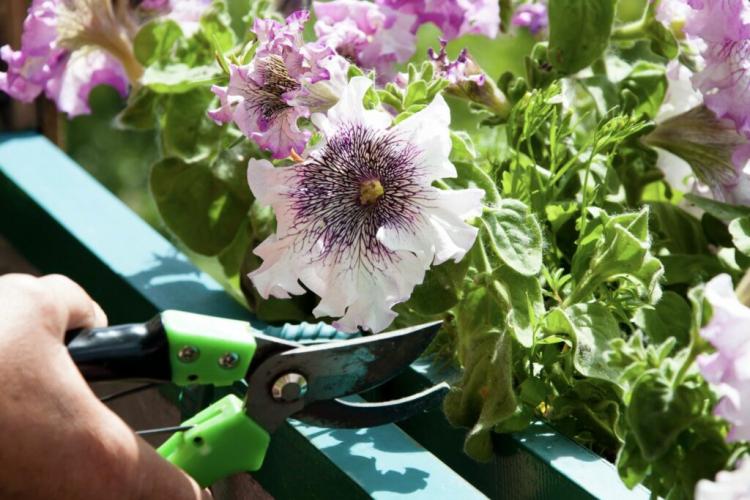
Summary of how to multiply petunias:
- It is best to cut cuttings in summer
- Use 10 cm long shoots
- Remove all leaves except the top pair of leaves
- Place in a glass with lime-free water until roots have formed and then put in pots with soaked potting soil OR plant directly in the pots
- Propagation was successful when the cuttings sprout from above
- Repot into larger planters and continue cultivating like adult petunias
- Acclimatization of the cuttings before transplanting in mid-May
Sow and propagate petunia seeds
The seeds of petunias can easily be harvested by yourself. You can find out exactly how this works in our special article on the propagation of petunias. If that is too much effort for you or if you simply do not own any petunias, you can simply buy the seeds in specialist shops.

The seeds are sown from February. For this purpose, a seed tray is filled with germ-free seed compost. The tiny, black seeds are mixed with dry quartz sand and distributed evenly and with sufficient spacing on the earth. Since petunias germinate light, a maximum of a fine layer of soil is spread over the seeds.
The temperature should not fall below 20 ° C during germination. At lower temperatures, the whole thing takes considerably longer. The soil is kept moist with a water sprayer. Germination takes place under a foil hood in a bright location without direct sunlight. After germination, the foil hood must be lifted briefly every day for ventilation.
When two pairs of leaves have formed, the plants are pricked out or individually transplanted into small pots. The plants must be acclimatized before they can move outside. To do this, they are put outside during the day and brought back in in the evening. From mid-May onwards, the plants can finally go outside.
Summary of sowing the seeds:
- Sow from February in a seed tray with aseptic seed compost
- Distribute seeds on the earth (beware of light germs!)
- Optimal germination temperature: min. 20 ° C
- Keep the soil evenly slightly moist with a water sprayer
- Cover the seed tray with a foil hood (air once a day from germination)
- Bright location without direct sunlight
- From the formation of the 2nd pair of leaves: prick out or transplant individually into small pots
- Acclimatize the plants outside before planting
- Transplant outside from mid-May (no more risk of frost)
Petunia varieties: hanging and standing petunias
The different varieties are traditionally divided into four groups of varieties, of which ‘Grandiflora’ and ‘Multiflora’ are the most important. The petunia varieties not only differ greatly from one another in terms of their growth habit. They also vary in their flower shape, color and size. There are varieties with small or large, single or double-filled flowers, star-shaped, fringed, or more rounded petals. We have put together a selection of particularly beautiful types of petunia for you.

Hanging petunia varieties
The hanging specimens are the balcony classics, as their shoots grow wonderfully over the boxes and tubs. They have beautiful, large, and usually showy flowers. Some varieties are also available as miniature petunias. They have much smaller leaves and flowers, but the same size overall. Attention: The Nana hybrids of the hanging petunias are very susceptible to rain and wind.
- Night Sky: As the name suggests, the large flowers of this variety are reminiscent of a star-filled night sky. The purple-blue basic color of the flower is peppered with white spots that are reminiscent of twinkling stars. No flower is like the other, which makes this variety particularly fascinating for the observer. It was even awarded the FLEUROSTAR in 2015/2016. Hanging variety with shoots up to 100 cm long.
- Lightning Sky: The flowers of this variety have a white eye and a dark, crimson, star-like edge with showy white speckles. Hanging variety with 40-60 cm long shoots.
- Viva petunias with their double-filled flowers belong to very special varieties. Here double means also double flower power. Despite their large flowers, they are very weather resistant and the variety is available in different colors. Hanging variety with 120 cm long shoots.
- Chocolina: With its rather small, chocolate-colored flowers, this variety looks nice to bite into (please don’t snack). It has a bushy, only slightly drooping habit with approximately 40 cm long shoots.
- Daybreak: Surrounded by pink dawn, the yellow eye of the mini petunia ‘Daybreak’ comes into its own. It has a hanging habit with shoots up to 60 cm long.
- Pirouette Red: The Piroutte Red is a representative with double-filled flowers. The red-eye is surrounded by a beautiful white. It grows hanging with 30 – 40 cm long shoots.
- Big Time Blue: Although this variety has a comparatively simple appearance with its dark blue flowers, it is particularly robust and easy to care for. The hanging shoots are approx. 100 cm long.
- Double Pink, Double White: These are mini petunias with double flowers, which are already all the rage in the USA. Not unfounded when you consider that the flowering shoots of the plants can be over a meter long.
- Burgundy Star Wave: The flowers of this hanging petunia are intense burgundy red with star-shaped white stripes extending from the center. The hanging petunia reaches a shoot length of 80 cm.
- Chameleon Double Pink Yellow: This hanging mini petunia changes its flower color depending on the season. The spectrum ranges from yellow to red to orange. The plant forms hanging shoots of 40 – 60 cm.
Standing varieties of petunia
The standing petunias are rather small plants, but they bloom wonderfully and in many colors. They grow upright like a small bush and are suitable as bedding plants as well as for planting in pots.

- Amore Queen of Hearts: The name says it all: With red hearts on a yellow background, every single flower announces a message of love. It reaches a height of 40 cm.
- Crazytunia Stonewashed: No flower of this variety looks the same. The color palette ranges from strong to delicate purple to creamy yellow. It is robust, weatherproof, vigorous, and blooming. The growth height reaches 30 – 50 cm.
- Duet Double Petunia: The double flowers impress with the play of colors on their salmon-colored, pink and white tips. Care should be taken to ensure a protected location. The variety has a stature height of 40 cm.
- Mirage Red Morn: Makes every bed shine with its red-bordered flowers with a white eye. Here a height of 40 cm is reached.
Hibernate petunias
Most of the petunias that are available in stores here are annuals. We enjoy their flowers until the first frost, but then they start their last walk to the compost. But does it really have to be? The answer is: No, it doesn’t have to. The plants can as already indicated in the section “Cutting petunias”, be overwintered. The petunias have to move to the protected winter quarters before the first frost. That is the case in September or October. The plants are cut back to a short length of 20 cm and overwintered in a light place at 5-10 ° C.

When overwintering, the plants are only watered in such a way that the soil does not dry out completely. In addition, there is no fertilization. From February onwards, the winter sleepers are slowly awakened by putting them outside on frost-free days during the day. From mid-May, when there is no longer any risk of frost, they can finally move outside again.

